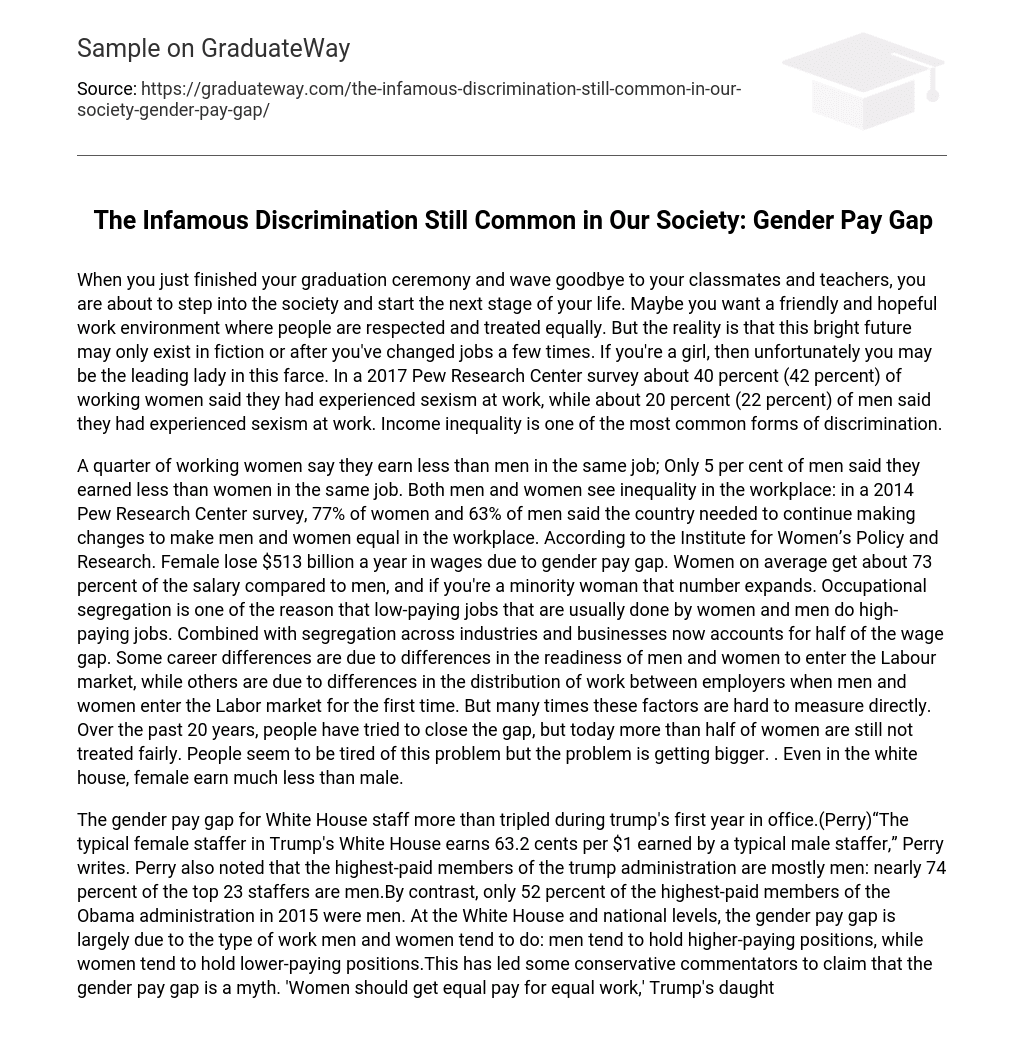When you just finished your graduation ceremony and wave goodbye to your classmates and teachers, you are about to step into the society and start the next stage of your life. Maybe you want a friendly and hopeful work environment where people are respected and treated equally. But the reality is that this bright future may only exist in fiction or after you’ve changed jobs a few times. If you’re a girl, then unfortunately you may be the leading lady in this farce. In a 2017 Pew Research Center survey about 40 percent (42 percent) of working women said they had experienced sexism at work, while about 20 percent (22 percent) of men said they had experienced sexism at work. Income inequality is one of the most common forms of discrimination.
A quarter of working women say they earn less than men in the same job; Only 5 per cent of men said they earned less than women in the same job. Both men and women see inequality in the workplace: in a 2014 Pew Research Center survey, 77% of women and 63% of men said the country needed to continue making changes to make men and women equal in the workplace. According to the Institute for Women’s Policy and Research. Female lose $513 billion a year in wages due to gender pay gap. Women on average get about 73 percent of the salary compared to men, and if you’re a minority woman that number expands. Occupational segregation is one of the reason that low-paying jobs that are usually done by women and men do high-paying jobs. Combined with segregation across industries and businesses now accounts for half of the wage gap. Some career differences are due to differences in the readiness of men and women to enter the Labour market, while others are due to differences in the distribution of work between employers when men and women enter the Labor market for the first time. But many times these factors are hard to measure directly. Over the past 20 years, people have tried to close the gap, but today more than half of women are still not treated fairly. People seem to be tired of this problem but the problem is getting bigger. . Even in the white house, female earn much less than male.
The gender pay gap for White House staff more than tripled during trump’s first year in office.(Perry)“The typical female staffer in Trump’s White House earns 63.2 cents per $1 earned by a typical male staffer,” Perry writes. Perry also noted that the highest-paid members of the trump administration are mostly men: nearly 74 percent of the top 23 staffers are men.By contrast, only 52 percent of the highest-paid members of the Obama administration in 2015 were men. At the White House and national levels, the gender pay gap is largely due to the type of work men and women tend to do: men tend to hold higher-paying positions, while women tend to hold lower-paying positions.This has led some conservative commentators to claim that the gender pay gap is a myth. ‘Women should get equal pay for equal work,’ Trump’s daughter has been outspoken on the issue. Ivanka Trump said on Twitter.’We must work to close the gender pay gap!’ But she refused to accept pay for her White House job. (Washington post) Historically, people have been trying to solve this problem but the problem is getting bigger and the real reason for gender pay gap is a lot of things, so it’s not one way to solve it. The modern principle of ‘equal pay for equal work’ is based on the disputes and struggles about wage law in history.
Until now the process of equal pay for women was under way, but it was a long and complex one. As more women began to work, the persistence of the wage gap led congress to pass the equal pay act. The wage act of March 29, 1963, prohibited deliberate wage reductions against women and discrimination against women in the workplace. This practice has increased the number of women and men in the workforce. The amount of wages paid to women so that later development was equal. So the wage laws proved to be necessary. These developments include more expanding the rights of female employees, as well as new time requirements. These gradually became mandatory requirements. In fact, since the enactment of the act, the number of women in the Labour force has increased dramatically. Over the next 50 years, the number of women in the workforce increased from 14.8 million to 43.2 million in 2009. (Watkins) But many women don’t actually benefit from the bill, and employers often refer to men’s salaries to set ‘soft’ female wages, which women are often afraid to challenge because it may be an important reason for their dismissal. So one of the fundamental reasons for gender pay gap is that women are less likely to negotiate for higher pay. Often, women get into trouble, especially in historically male-dominated industries (Watkins)





